Houseplants for Classrooms
Classrooms and homes with small children or pets can have interesting and fun plants, and many plants offer an educational opportunity as well.

African violets are small, easy-to-grow plants with flowers that come in shades of pink, purple, and white. These plants can be used to teach about propagation. To create new plants just snap off a leaf and nestle it in potting soil.
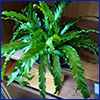
Bird’s nest fern is an interesting plant, with shiny leaves that uncurl from the center. As an epiphyte, this plant can grow either in moist, loose soil, or on trees and rocks with very little media. This plant is useful for teaching about epiphytes.
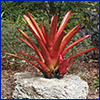
Bromeliads, also epiphytes, stand out with bold, colorful leaves and exotic flower spikes. When grown indoors they need bright, diffused light—no direct sunlight. The range of colors available in this plant group allows you to add a bright and tropical feel to your office or classroom space. Caution: some species have toothed leaf margins that can scratch and cause itching.
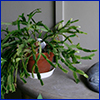
Christmas cactus gets the most attention during the winter holidays, but it makes a great indoor plant throughout the year. This plant is easy to care for and shines with colorful blooms when days become shorter.
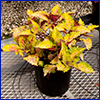
Coleus are popular garden annuals in Florida, but they also do well when grown in bright indoor light. Coleus not only bring color to a classroom, they are simple to propagate from stem cuttings stuck in water.
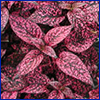
Polka-dot plant is small and has interesting foliage speckled with pink, red, or white. While they do produce flowers (lavender or blue), the foliage is the most interesting part of this plant. The colorful specks will fade if not provided enough light.
(Read this UF/IFAS publication for more information; pdf)
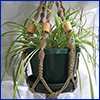
Spider plant is fun to grow indoors. This popular houseplant spreads by growing long shoots that develop pre-rooted plantlets at their tips along with clusters of small white flowers. The plantlets are easily propagated by simply removing and potting them.
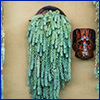
Succulents make great indoor plants and they come in a large variety of forms and colors. Donkey tail (Sedum morganianum) is an interesting-looking plant that has trailing stems surrounded by smooth, lance-shaped overlapping leaves that completely surround the stem, resembling an animal’s tail. (Detail of photo “Mexico – Tepoztlan – Masks & Donkey Tails” by Ted McGrath is licensed under CC BY NC SA 2.0.)
While there are other plants like ZZ plant, golden pothos, peace lily, and aglaonema that are also popular indoor plants, they’re aroids — a group of plants that contain calcium oxalate crystals. When consumed, these may cause painful stinging and burning to the mouth and throat, so stick to non-toxic plants like the ones we’ve listed above for spaces with children and animals.
